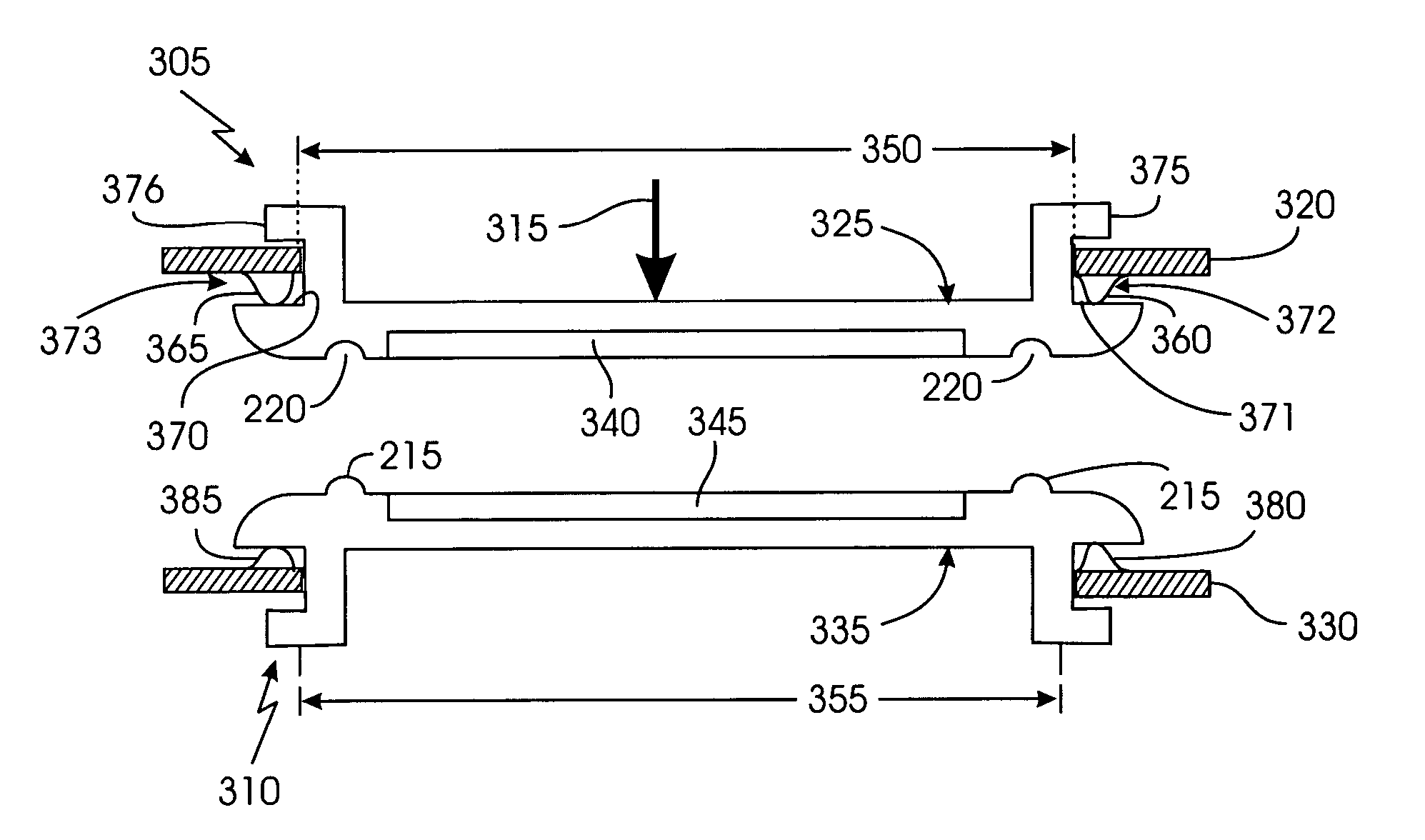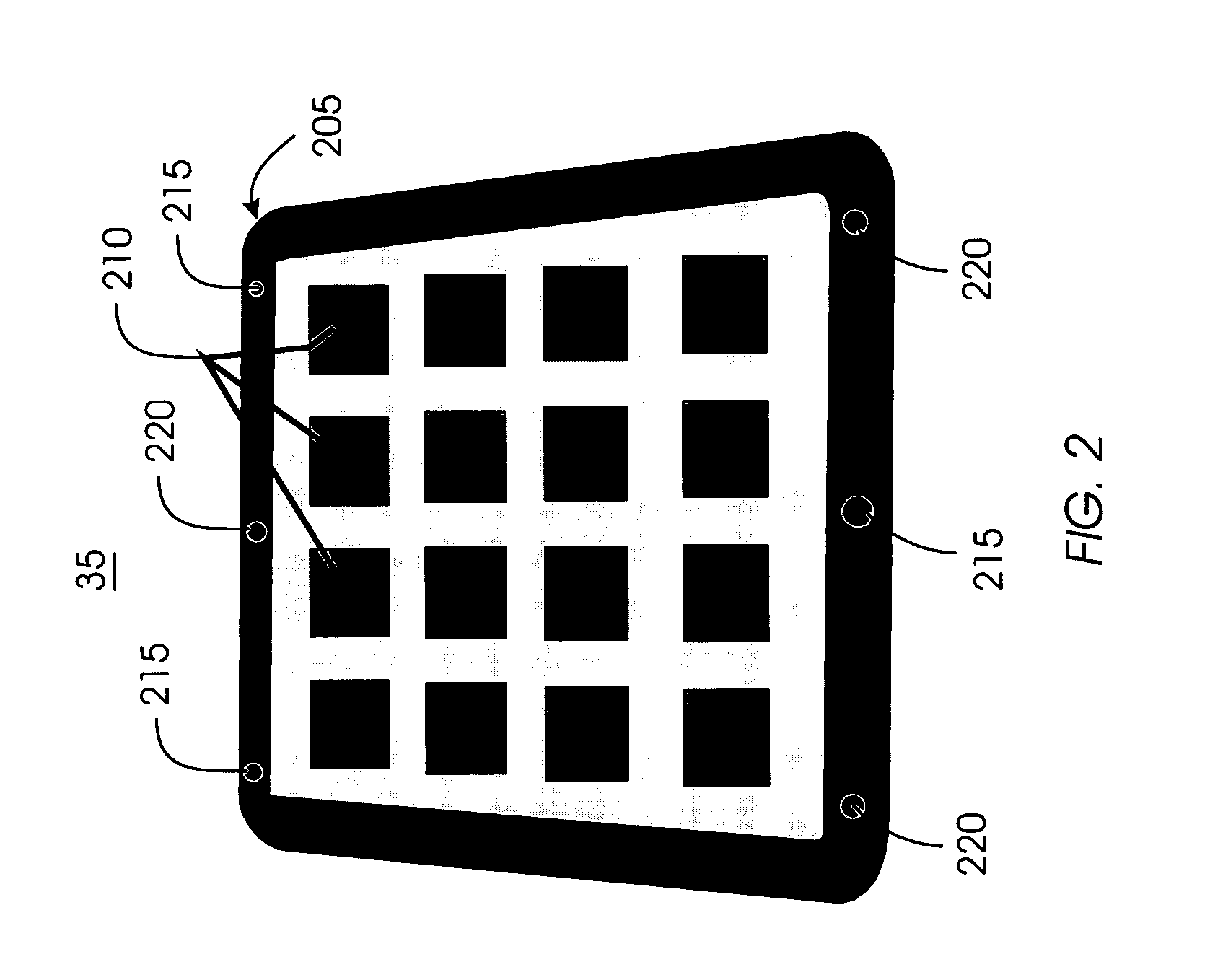Mechanism for self-alignment of communications elements in a modular electronic system
- Summary
- Abstract
- Description
- Claims
- Application Information
AI Technical Summary
Benefits of technology
Problems solved by technology
Method used
Image
Examples
Embodiment Construction
[0020]FIG. 1 (FIGS. 1A, 1B) portrays an exemplary modular electronic system 100 in which a mechanism for self-alignment of communications elements can be used. The modular electronic system 100 comprises a plurality of generally identical or similar bricks 15 that are collectively referred to as subsystem 25. The bricks 15 are stacked together to form the modular electronic system 100. In this example, each brick 15 has a plurality of contact surfaces 20 that are adapted to be located in close proximity to, or in contact with the contact surfaces of other bricks 15. Arrow 30 illustrates the placement of a brick 15 within the modular electronic system 100.
[0021] In this example, each contact surface 20 accommodates a communications element 35. In turn, the communications element 35 may comprise one or more capacitive half-couplers, a transmitter, a receiver, or a transceiver. Each brick 15 comprises a data processing unit (server), a data storage unit, a networking unit, or another ...
PUM
 Login to View More
Login to View More Abstract
Description
Claims
Application Information
 Login to View More
Login to View More - R&D
- Intellectual Property
- Life Sciences
- Materials
- Tech Scout
- Unparalleled Data Quality
- Higher Quality Content
- 60% Fewer Hallucinations
Browse by: Latest US Patents, China's latest patents, Technical Efficacy Thesaurus, Application Domain, Technology Topic, Popular Technical Reports.
© 2025 PatSnap. All rights reserved.Legal|Privacy policy|Modern Slavery Act Transparency Statement|Sitemap|About US| Contact US: help@patsnap.com



